Winter and astronomy go so well together.
The countdown to Christmas is always exciting, but for astronomers it’s doubly so as it’s a great time to head out observing.
The nights are long, and often crisp and clear, though you shouldn’t underestimate just how cold it can get.
In this article, we’re going to point out 11 stunning winter astronomy highlights you can see this season.
As always, you can use a star chart or an astronomy and stargazing app to help you locate the objects.
If using the latter, don't forget to turn your phone's screen red to preserve your dark-adapted vision.
Wrap up warm and enjoy. Let the festive deep-sky tour begin!
More winter astronomy

11 winter astronomy targets
The Orion Nebula
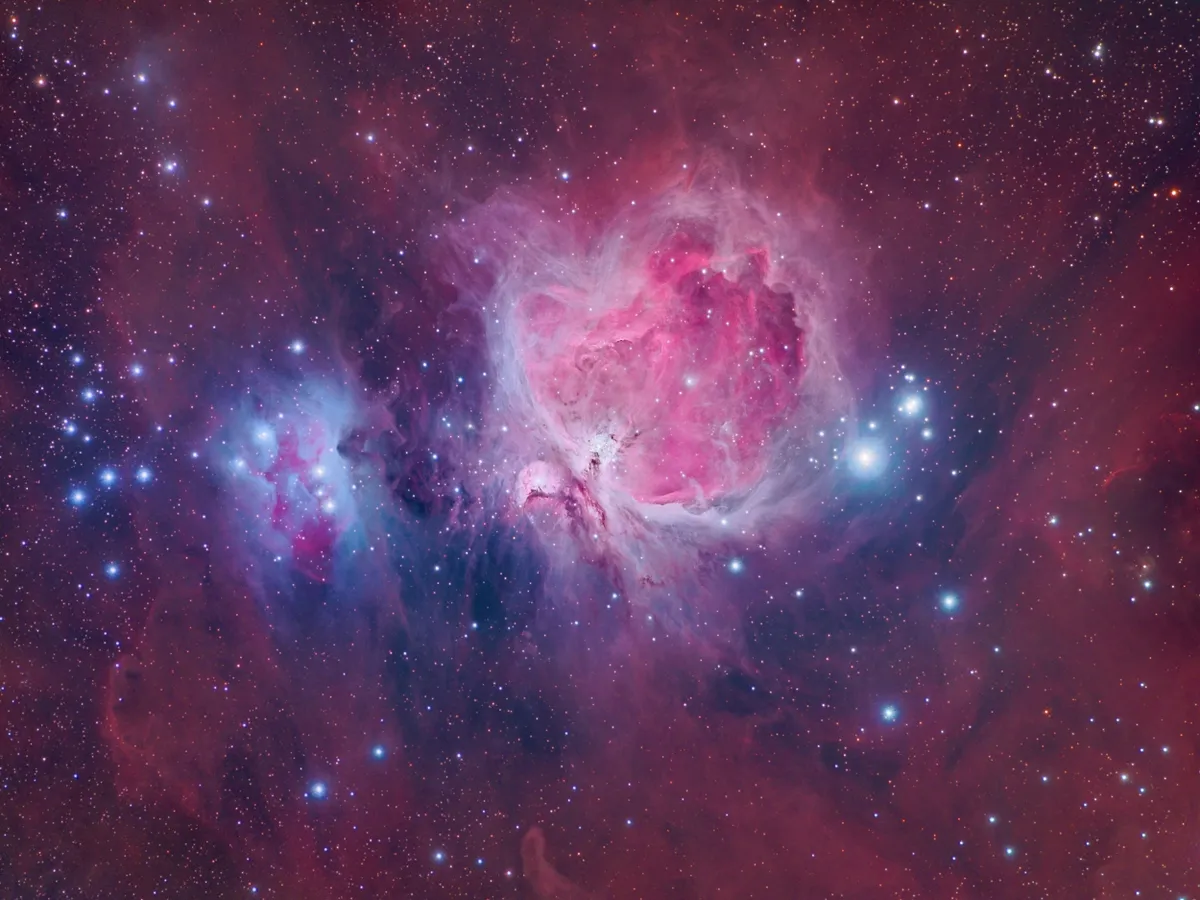
The Orion Nebula is a ‘must see’ delight. For many it provides a first taste of the deep sky.
It’s visible to the naked eye and simple to find in the constellation of Orion.
The shape of the constellation itself is hard to miss thanks to the prominence of the three stars that make up Orion’s Belt: Alnitak, Alnilam and Mintaka, which range in brightness from mag. +1.7 to mag. +2.4.
Orion's Belt is the starting point for locating the Orion nebula.
Hanging from its centre is Orion’s sword; within the sword, flanked north and south by bright stars, is a bright misty region that is clearly not stellar – this is the Orion Nebula, M42.
The bright core is home to the Trapezium Cluster, a trapezoid shape of four bright young stars.
The nebula itself fans out into a glorious region of sculpted gas and dust – there’s plenty to see here if you’re using binoculars or a telescope.
The Double Cluster
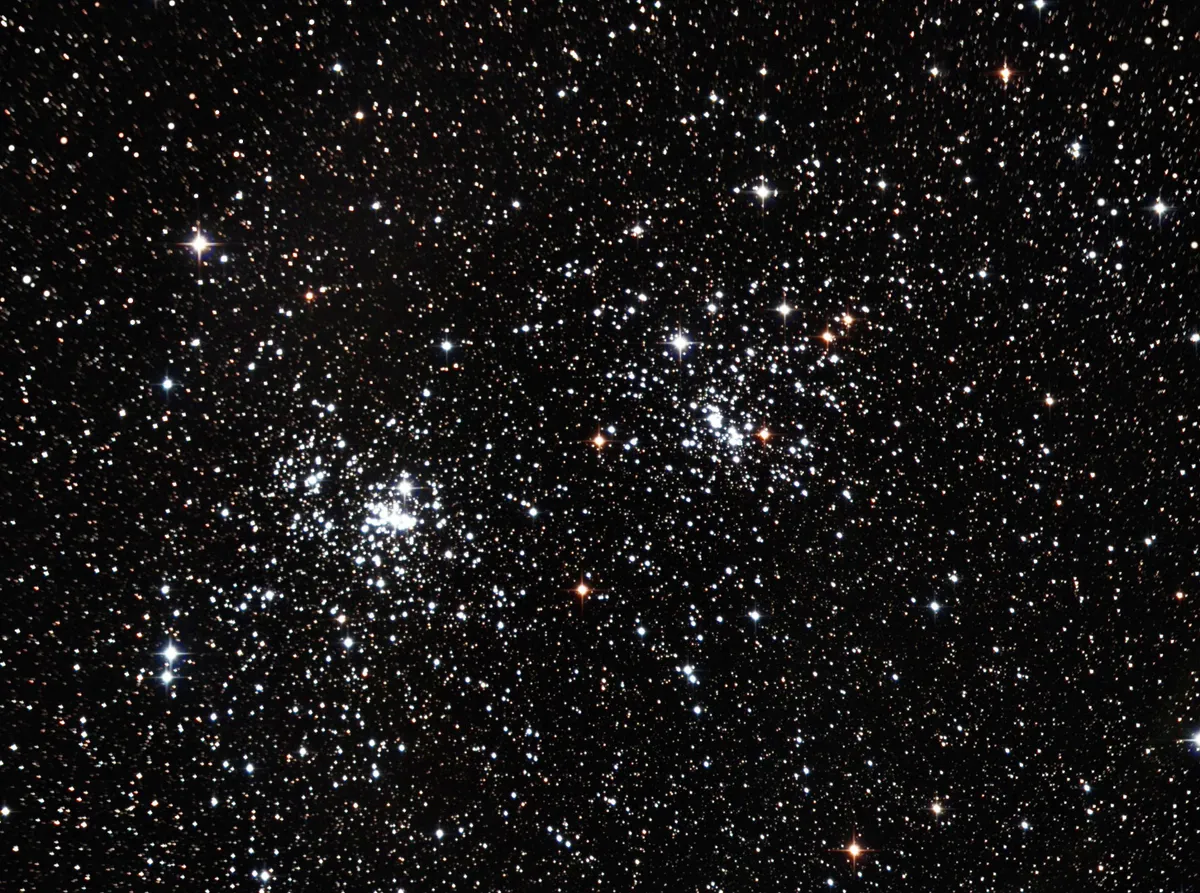
Our next stop also has a sword connection – it’s the Double Cluster in Perseus, which is sometimes known as the Sword Handle.
Imagine a line from mag. +2.2 Gamma (γ) Cassiopeiae to mag. +2.7 Ruchbah (Delta (δ) Cassiopeiae) and continue along it for about twice the distance again to find this delightful object.
It’s a two for one view, comprising open clusters NGC 884 and NGC 869.
The pair are a delight through binoculars, though like the Orion Nebula you should be able to see them with the naked eye, especially from a dark location.
Both star clusters contain numerous hot, young supergiants, white-blue in colour, as well as a sprinkling of prominent red giants.
At 7,600 and 6,800 lightyears from us respectively, they are also relatively close to one another.
Neither cluster features in the Messier Catalogue, but they are included collectively in Patrick Moore’s Caldwell Catalogue, as Caldwell 14.
The Leo Triplet
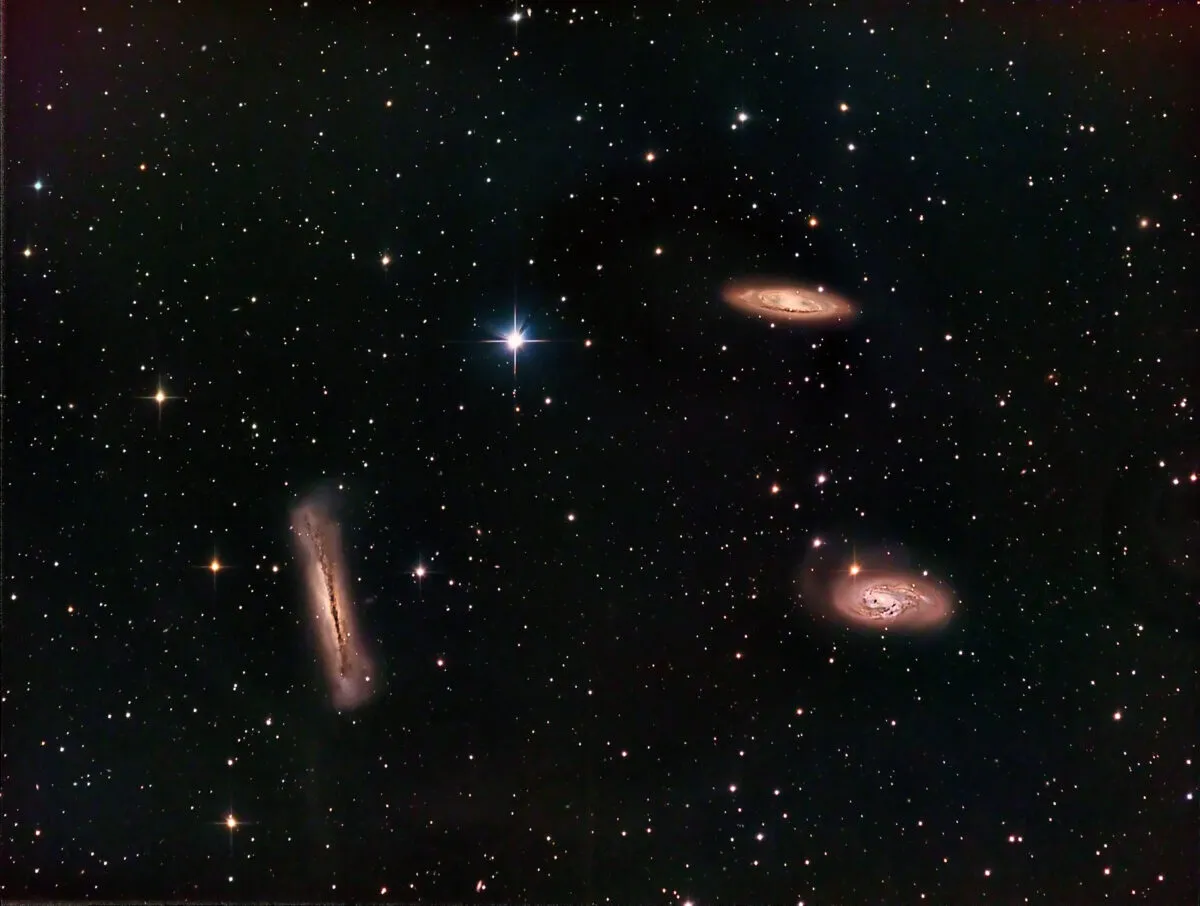
From a doublet to a triplet, we move to a grouping of three spiral galaxies in the constellation of Leo, the Lion.
A couple of hops are required to reach the Leo Triplet.
Start from the Lion’s ‘hip’, mag. +3.3 Chort (Theta (θ) Leonis). Move south 2º to mag. +5.3 star 73 Leonis, then east 1º to find the galaxies.
The brightest of the three is oval-shaped M66.
M65, the second brightest, is more cigar-shaped and has a less-distinct core than M66, but both are visible in large binoculars or a small telescope.
NGC 3628 completes the line up, though its edge-on orientation can make it quite elusive. You’ll need a 6- to 8-inch telescope.
Placing M65 and M66 along the southern edge of the eyepiece will allow you to see all three at about 65x magnification.
The Pleiades
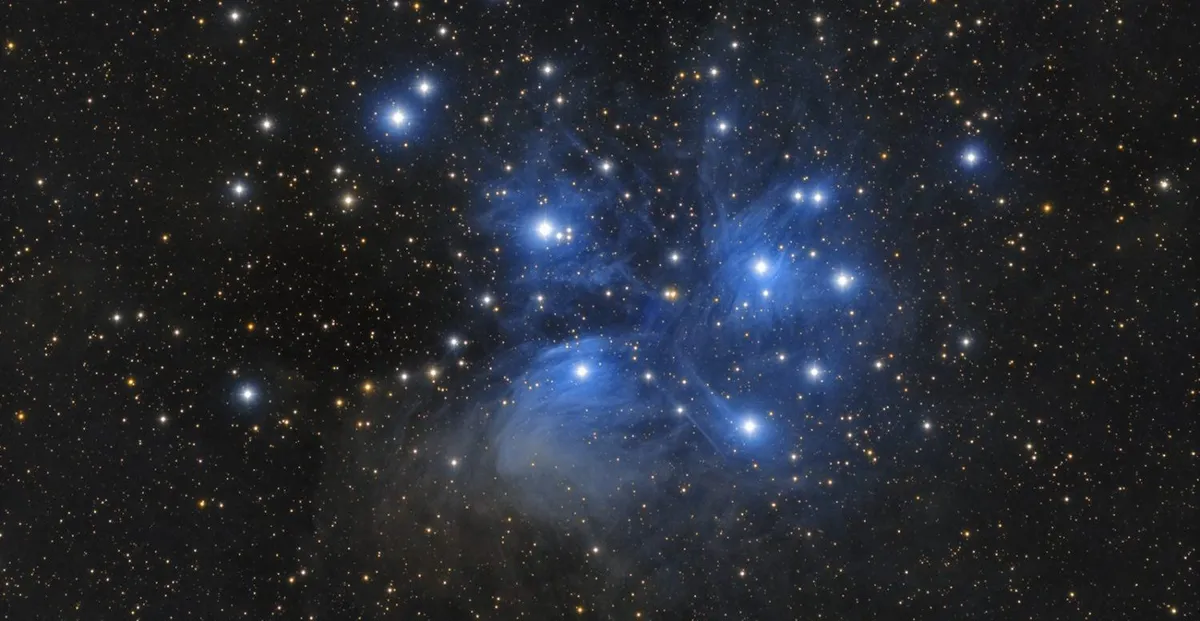
Our next object is arguably one of the most beautiful open clusters in the night sky and a classic winter astronomy sight.
It's the glorious Pleiades in Taurus.
At just under 2° across, this cluster is clearly visible to the naked eye in most conditions, so it’s very simple to find.
Start from Aldebaran and sweep northwest; you should be able to identify at least six of the cluster’s 500 or so member stars with the naked eye.
The four most prominent stars form a trapezoid reminiscent of the ‘bowl’ of the Plough.
One of the brightest stars, Merope, has a lovely bent line of stars extending to the east that is visible at low magnification in binoculars or a wide-field telescope – indeed, low magnification is generally the best way to enjoy the majesty of this cluster.
A passing cloud of dust gives a gentle bluish hue to the bright young stars through their reflected light. See if you can spot the Merope Nebula, for example.
Want to capture what you see? Read our guide on how to photograph the Pleiades.
The winter constellations
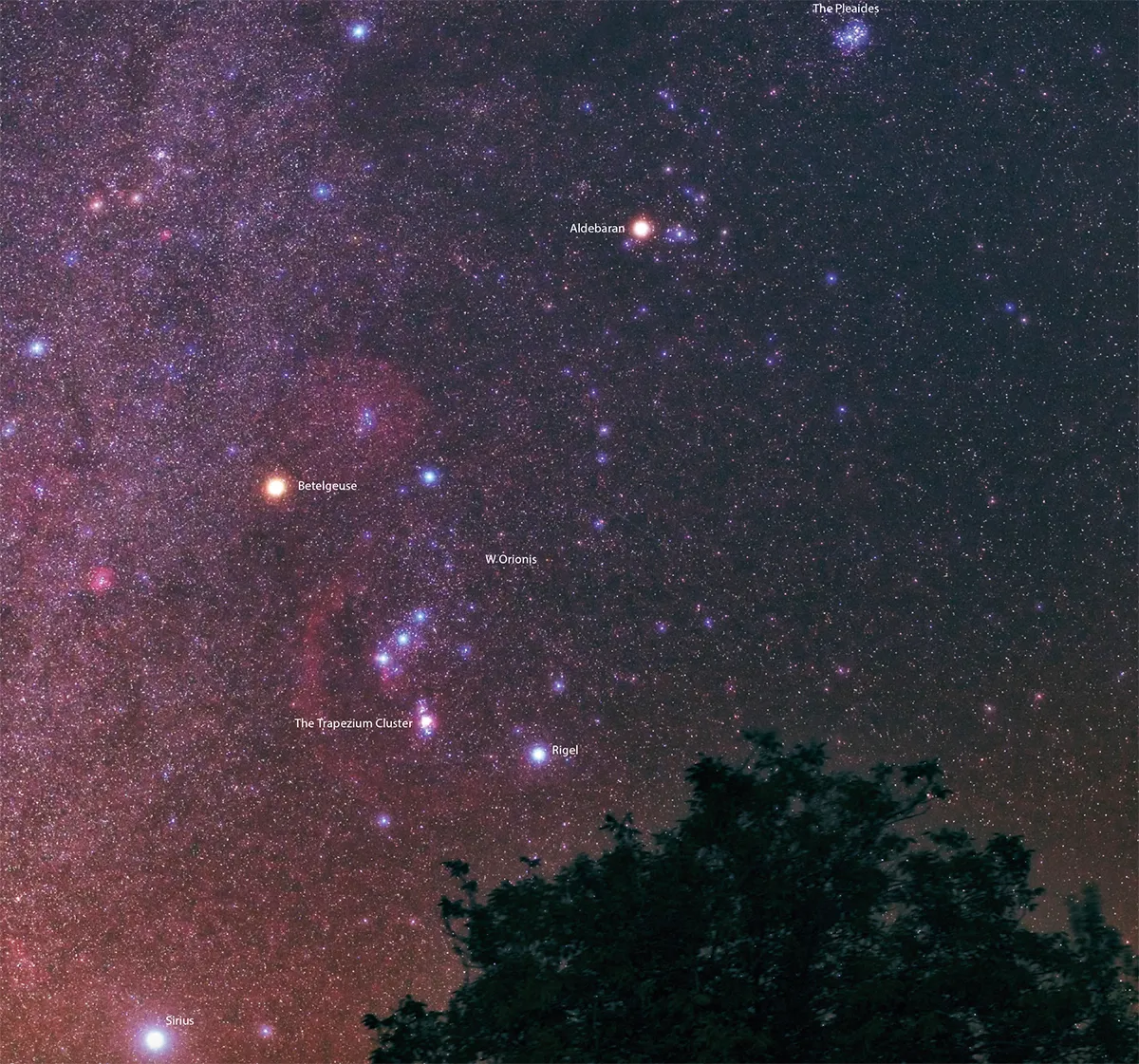
The winter constellations are not to be missed, and are part of the reason astronomy at this time of the year is so rewarding.
Mighty Orion dominates the night sky with his broad shoulders and prominent belt stars.
And although the Orion Nebula is the constellation’s showpiece object, there is plenty more to see and photograph within it.
Similarly, Taurus has much to offer with numerous open clusters visible within its boundaries, including the famous Pleiades and Hyades.
Gemini, with its bright main stars Castor and Pollux, paddles within the misty band of the Milky Way and is home to many open clusters and nebulae.
You should not neglect the constellations of Canis Major and Canis Minor either.
Within their boundaries lie several fine double stars, a glittering open cluster (M41) and Sirius (Alpha (α) Canis Majoris), the brightest star in the sky.
The constellation of Cancer is often overlooked at this time of year too.
Be sure to enjoy the Beehive Cluster and fellow open cluster M67 – the latter is one of the oldest open clusters that we know of.
The Geminid meteor shower
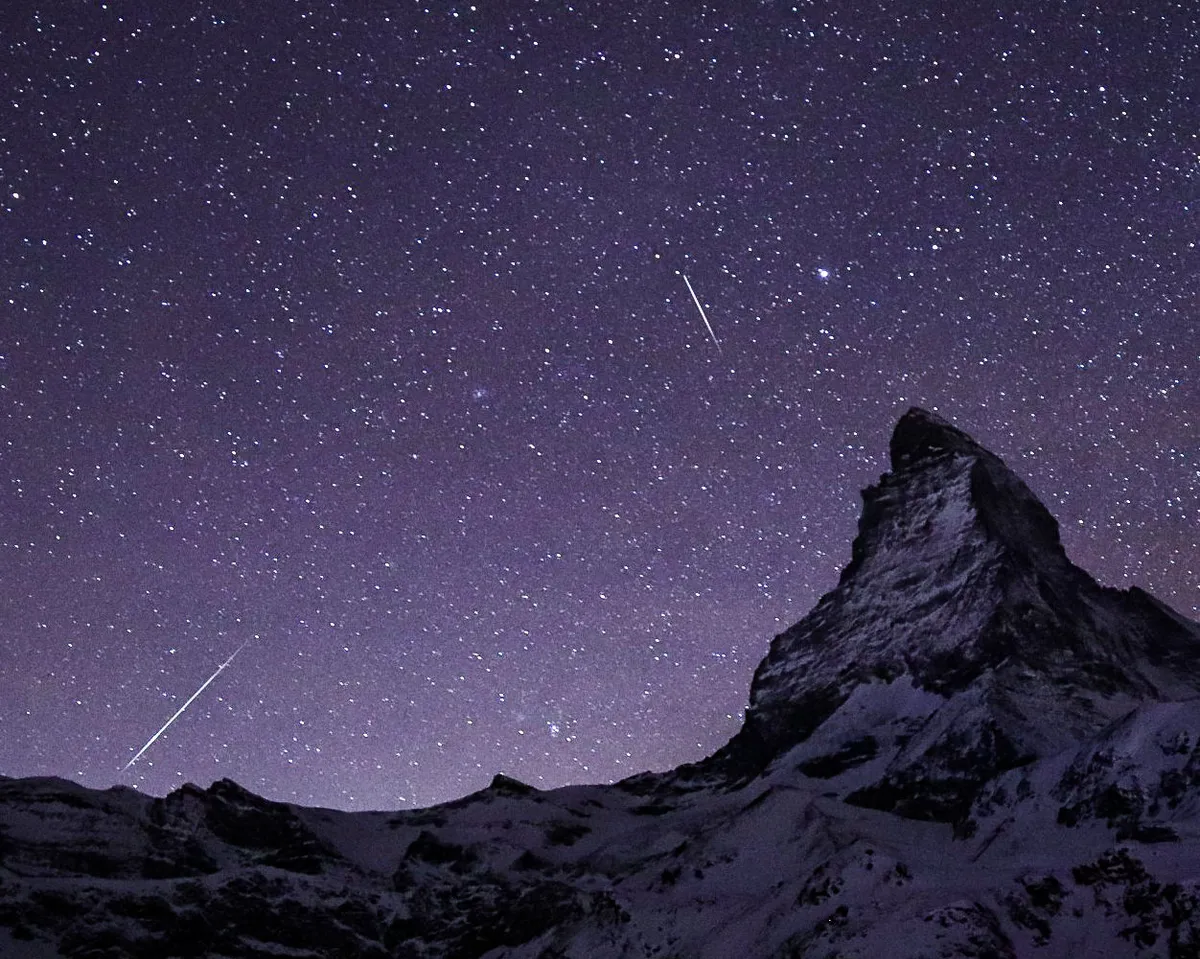
Meteor showers can both surprise and disappoint, but they remain a great excuse for getting your sunbed out in the middle of winter!
Wrapped up against the elements and lying back comfortably is a great way to watch these celestial fireworks, and the Geminids are one of the best meteor showers.
The peak of activity of the Geminid meteor shower takes place on the night of 13 December.
The radiant, near Castor in Gemini, will be at its greatest elevation at about 2am in December – you just need to make sure you’re comfortable and ready to enjoy the show.
The Horsehead Nebula
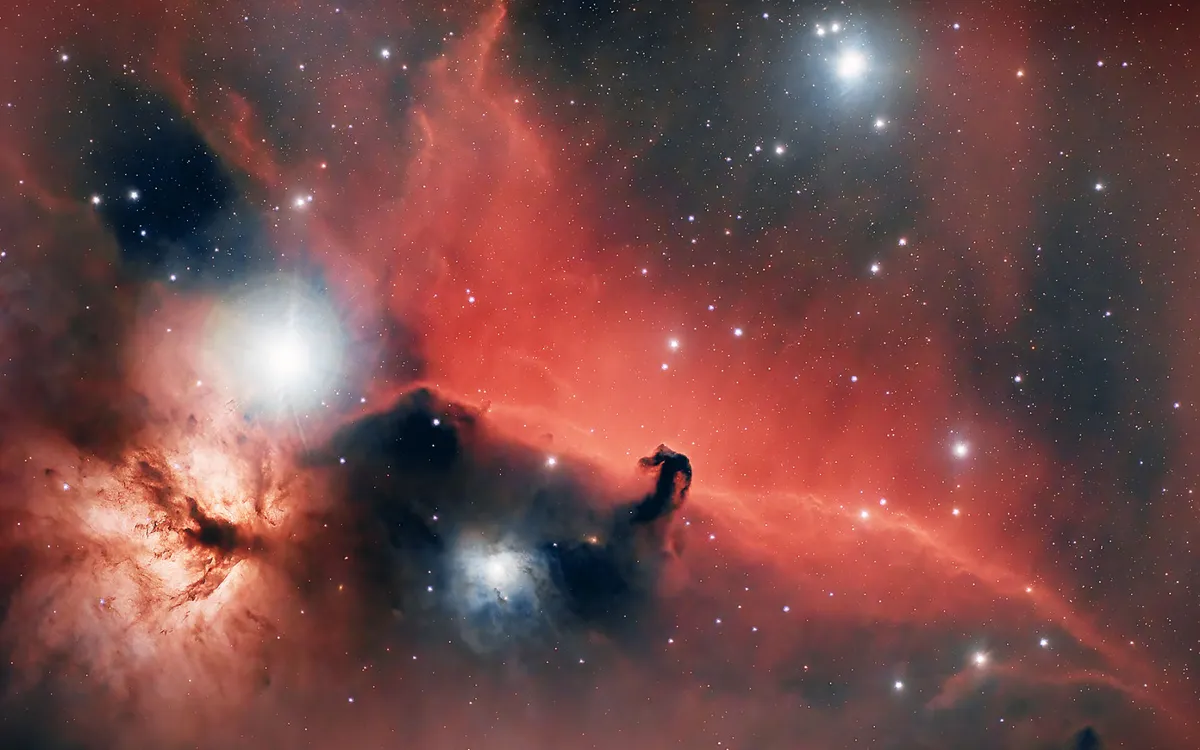
The Horsehead Nebula is one of the most famous deep-sky objects and a favoured target for astrophotographers.
Its nickname comes from the equine-shaped dark nebula that dominates images of the region.
Found in the constellation Orion, it's a great winter astronomy target as the Hunter is so well-placed during the colder months.
The Horsehead's dark cosmic cloud is contrasted by bright emission nebula IC 434.
The cloud resembles the silhouette of a horse’s head, and looks rather like a knight chess piece, we think.
This is B33, the 33rd entry in the Barnard Catalogue of dark nebulae.
Great Square of Pegasus

Not a formal constellation but an asterism, the Great Square of Pegasus is a beautiful sight seen in early winter.
It's found in the constellation of Pegasus, the Flying Horse, and is a large shape formed from four stars stars: Markab, Scheat and Algenib in Pegasus, along with Alpheratz, the latter being located in the constellation Andromeda.
The Andromeda Galaxy
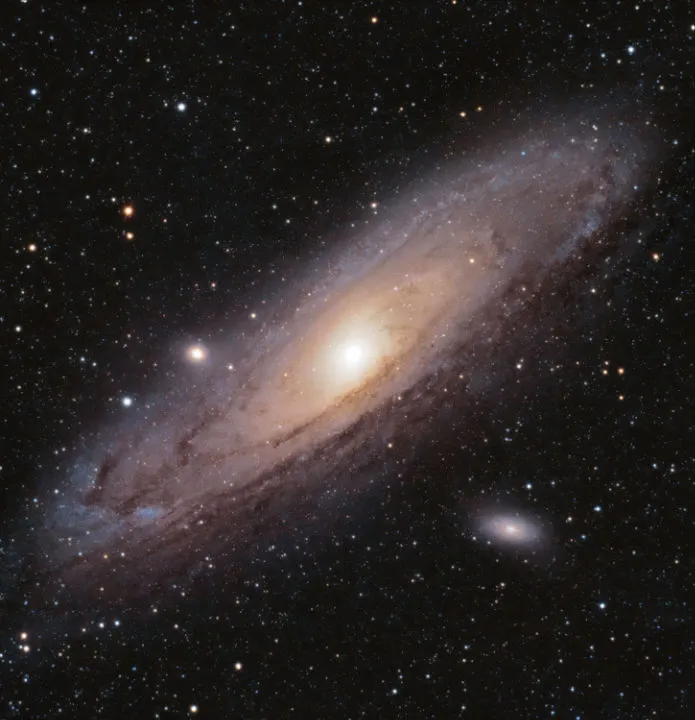
The Andromeda Galaxy is a our closest neighbouring major galaxy, and the furthest object you can see with the naked eye (although you'll need good eyesight, a clear night and dark skies to achieve this.
You can spot the Andromeda Galaxy best in autumn, but it's visible from the northern hemisphere for much of the year, and the dark nights of winter are a good time to get out and spot it.
You should be able to spot it as a misty smudge not far from the band of the Milky Way.
Or, try and locate it through binoculars.
Start at the Great Square of Pegasus and imagine a diagonal from the southwest to northeast corner.
Extend this around the same distance again to reach star Mirach.
Turn by 90º and head northwest for a short while towards dimmer mag. +3.9 Mu (m) Andromedae and then dimmer still mag. +4.5 Nu (n) Andromedae.
For more help finding the Andromeda Galaxy, try our 4 star hops to help you navigate the sky.
The Triangulum Galaxy
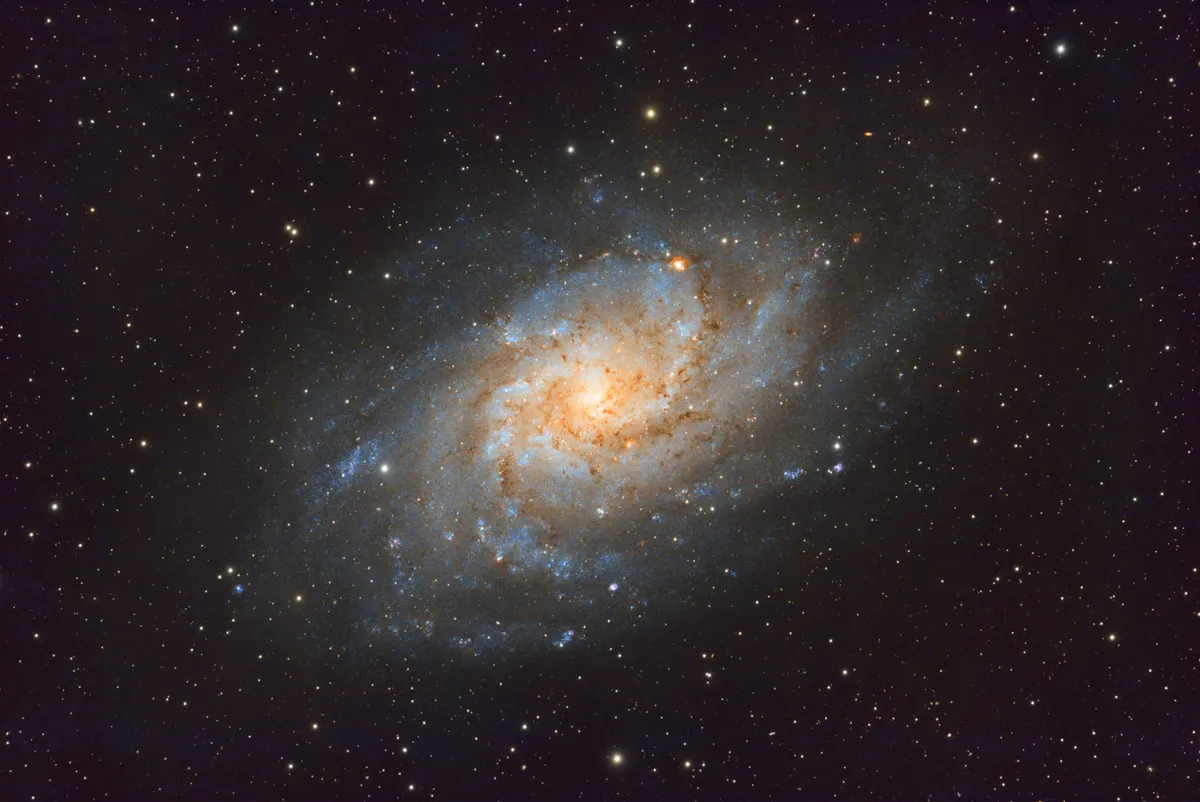
The iconic Triangulum Galaxy, also known by its Messier number M33, is 3 million lightyears from Earth and can be found in the Triangulum constellation.
It's one of our galactic neighbours and is a great target for astrophotographers.
The Triangulum constellation and its eponymous galaxy can be found by starting at the Great Square of Pegasus and star-hopping to the Andromeda Galaxy.
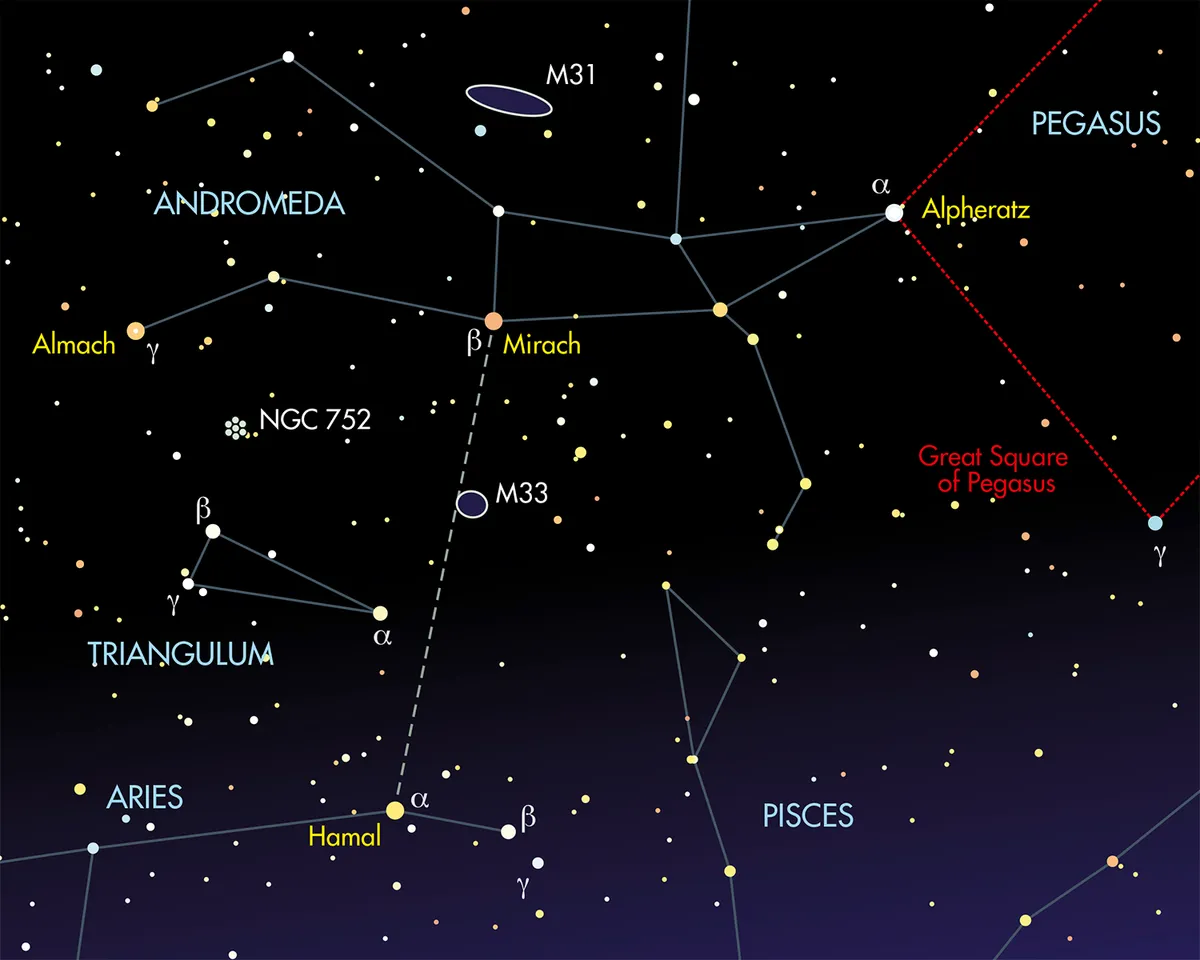
Then use stars Mirach and Hamal to help you find the Triangulum constellation, as seen in the image above.
The Triangulum Galaxy stretches 60,000 lightyears across, which may sound huge, but it's tiny - compared to the 200,000 lightyear and 100,000 lightyear diameters of the Andromeda Galaxy and the Milky Way, respectively.
The Rosette Nebula
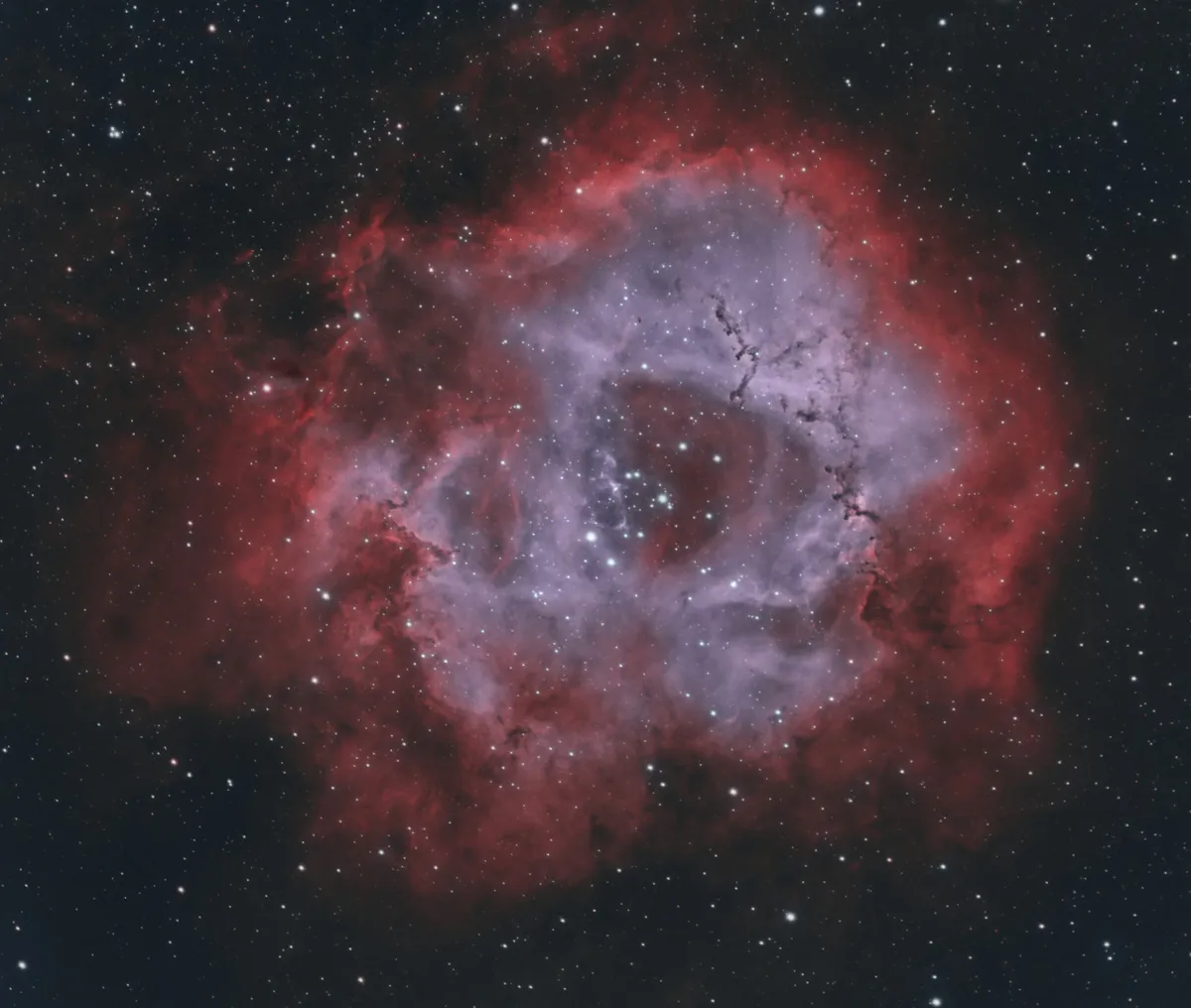
Another favourite target of astrophotographers, the Rosette Nebula is a colossal star-forming region stretching 100 lightyears across and located 5,000 lightyears away.
You can find the Rosette Nebula in the constellation Monoceros in the winter months.
Find it between stars Betelgeuse in the constellation Orion and Procyon in Canis Minor.
Draw a line between Betelgeuse and Procyon, then look just south of that line roughly halfway along, and you'll see it.
The nebula can't be seen with the naked eye, so you'll need a telescope to observe it.
What are your favourite winter astronomy targets? Let us know by emailing contactus@skyatnightmagazine.com


